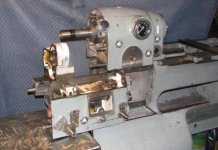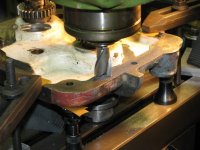As you may recall from Episode 1, I acquired a "basket case" 10EE that had been mostly disassembled. http://www.practicalmachinist.com/vb/monarch-lathes/basket-case-10ee-episode-1-acquisition-moving-315292/
When I first saw it, it looked like this:
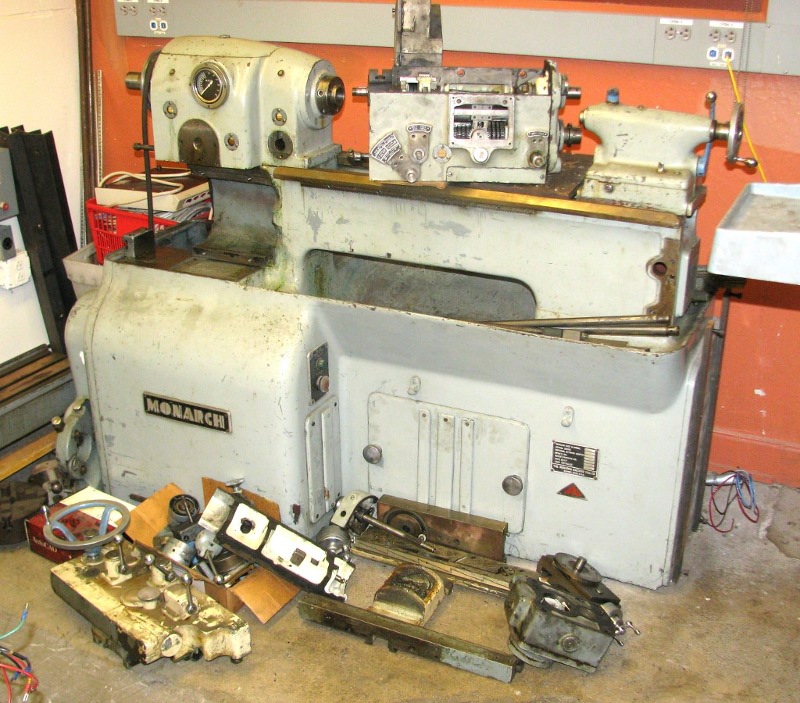
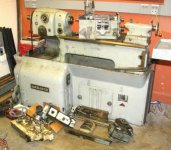
Note that the gearbox is partially disassembled and sitting on top of the ways (thankfully on top of a wooden board), the apron is sitting on the floor, the saddle is completely disassembled, and there boxes of random parts.
After getting it home, the first thing I did was spray it with Harbor Freight degreaser and a garden hose nozzle. This immediately removed much of the crappy aftermarket paint job:
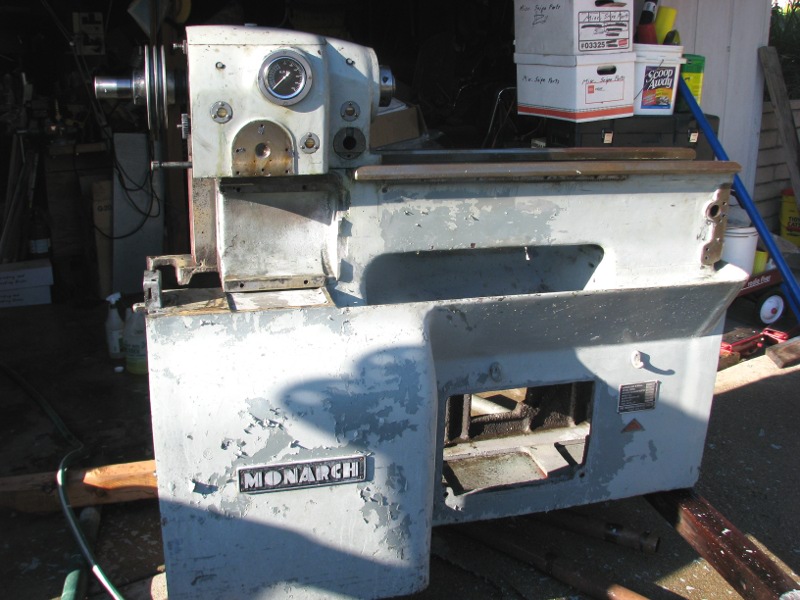

Since my ultimate goal is to refinish the lathe to "showroom" condition, I figured that now is the time to do the preparation. At the same time, I enrolled in an auto body refinishing class at Los Angeles Trade Tech so that I can "do it right". Meanwhile, I set about scraping and cleaning. The base now looks like this:
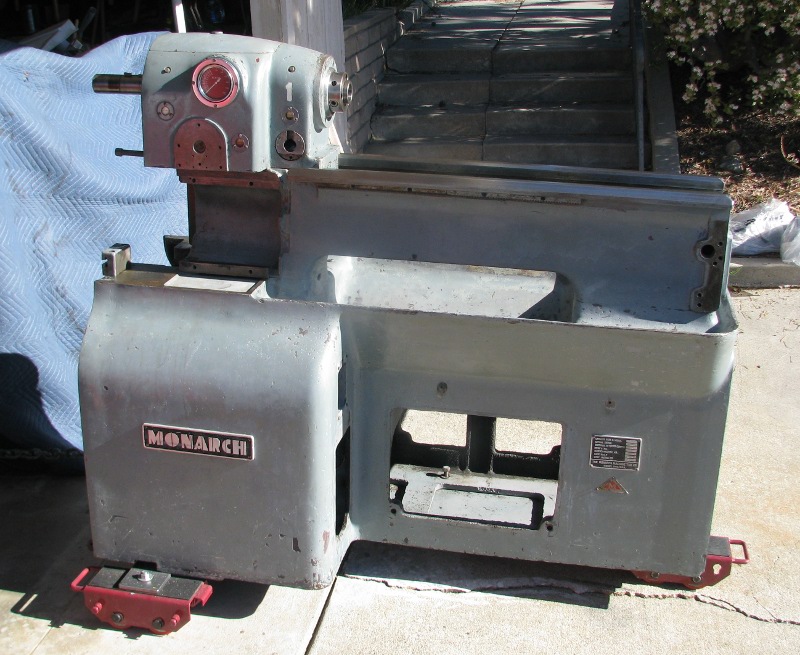

Note that I have it mounted on skates so I can easily (sort of) move it out of the garage and into the driveway to work on it. Being paranoid, it has a stout chain limiting how far it will go!
The next task was to work on the gearbox. It is a heavy beast and I needed a way to move it around and raise it to a good working height. A Harbor Freight hydraulic lift table was just the ticket. But because the lathe is on skates, it is now about four inches too high for the table. No problem, just add a platform made from scrap wood, topped with a piece of sheet steel (for lower sliding friction). The result:
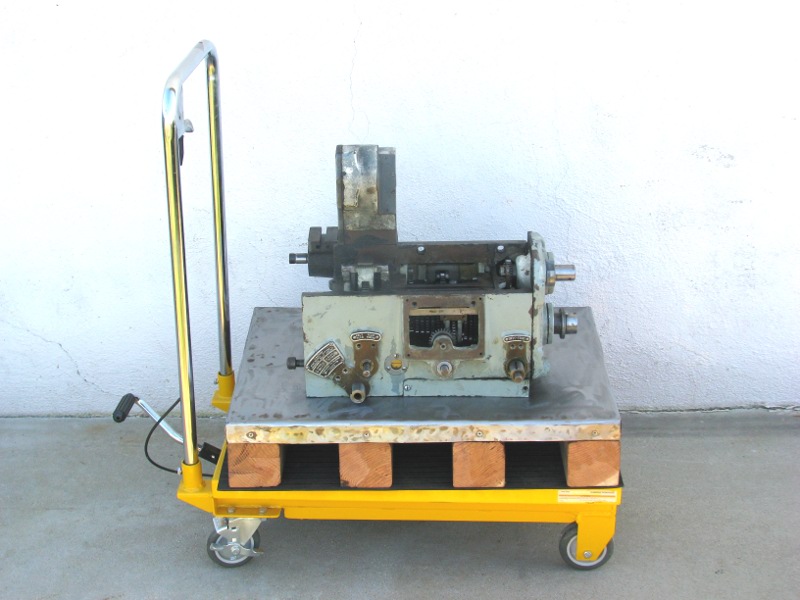

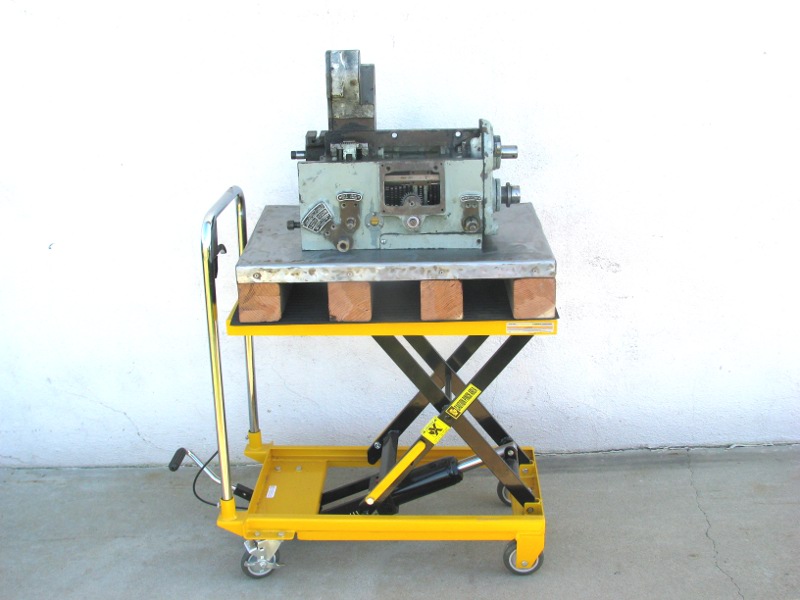
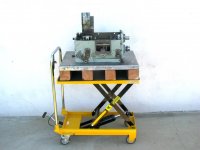
Next post: Dealing with the gearbox...
When I first saw it, it looked like this:

Note that the gearbox is partially disassembled and sitting on top of the ways (thankfully on top of a wooden board), the apron is sitting on the floor, the saddle is completely disassembled, and there boxes of random parts.
After getting it home, the first thing I did was spray it with Harbor Freight degreaser and a garden hose nozzle. This immediately removed much of the crappy aftermarket paint job:

Since my ultimate goal is to refinish the lathe to "showroom" condition, I figured that now is the time to do the preparation. At the same time, I enrolled in an auto body refinishing class at Los Angeles Trade Tech so that I can "do it right". Meanwhile, I set about scraping and cleaning. The base now looks like this:

Note that I have it mounted on skates so I can easily (sort of) move it out of the garage and into the driveway to work on it. Being paranoid, it has a stout chain limiting how far it will go!

The next task was to work on the gearbox. It is a heavy beast and I needed a way to move it around and raise it to a good working height. A Harbor Freight hydraulic lift table was just the ticket. But because the lathe is on skates, it is now about four inches too high for the table. No problem, just add a platform made from scrap wood, topped with a piece of sheet steel (for lower sliding friction). The result:


Next post: Dealing with the gearbox...








